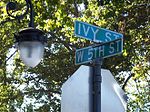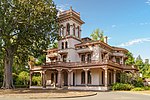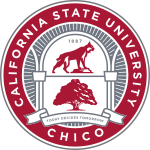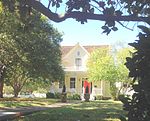St. Augustine of Canterbury Anglican Church

St. Augustine of Canterbury Anglican Church (formerly St. John's Episcopal Church) is a historic church at 230 Salem Street in the South Campus Neighborhood of Chico, California, United States. It was built in 1905 at the southeast corner of West Fifth and Broadway Streets in Downtown Chico. The building was moved about three blocks, in 1912, to the northwest corner of West Second and Salem Streets.It added to the National Register of Historic Places in 1982. It was deemed significant as a work of a master architect, Arthur Benton. Its National Register nomination asserted it "is a sophisticated design statement which demonstrates the architect's skillful integration of Gothic Revival and Shingle Style elements; the high quality of its design and workmanship set it apart as an outstanding example of ecclesiastical architecture of the period.In 1982, the building was sold to Bill and Amy Pang who converted it into a Chinese restaurant and dance club. It was purchased and reconsecrated by St. Augustine of Canterbury Anglican Church in 1994.
Excerpt from the Wikipedia article St. Augustine of Canterbury Anglican Church (License: CC BY-SA 3.0, Authors, Images).St. Augustine of Canterbury Anglican Church
Broadway Street, Chico
Geographical coordinates (GPS) Address Nearby Places Show on map
Geographical coordinates (GPS)
| Latitude | Longitude |
|---|---|
| N 39.728888888889 ° | E -121.84027777778 ° |
Address
Broadway Street 309
95928 Chico
California, United States
Open on Google Maps








